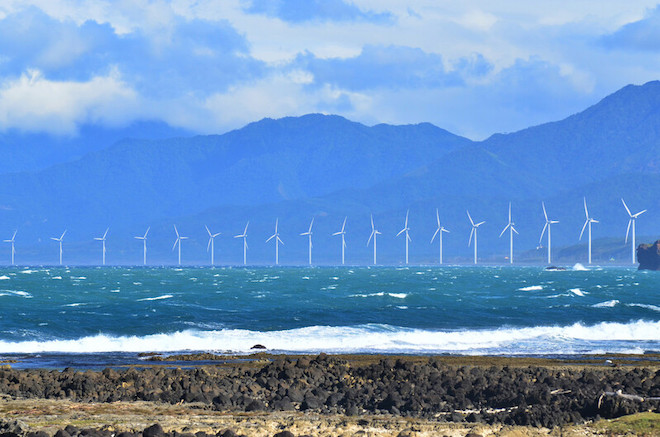
This article is published in collaboration with Arup.
Blessed with long coastlines and favorable government policies, Asia looks set to grow its offshore wind significantly over the next decade and beyond. As the region makes the most of its opportunities, this promises to be a very busy time—both for developers and for design teams with the local expertise to meet these regional needs.
The International Renewable Energy Agency (IREA) estimates that by 2050 Asia will be a global leader in wind power and will account for over 60% of all offshore wind capacity installed globally. The Global Wind Energy Council expects the Asian offshore market to have installed nearly 100 gigawatts (GW) of offshore wind capacity by 2030.
Utilizing long coastlines
As Japan, the Republic of Korea, and Taipei,China continue to move away from nuclear after the Fukushima disaster in 2011, they are looking to the offshore wind potential around their long Pacific coastlines.
Japan has the seventh longest coastline in the world and has challenged itself to establish 10 GWs of offshore wind power by 2030.
Taipei,China has approved more than 5.7 GWs of offshore wind projects.
Across Japan, the Republic of Korea, and Taipei,China, 40 GWs of offshore wind projects are planned in the next 10 years.
Favorable policy to enable projects
Governments have been moving to ensure policy encourages offshore wind development. In late 2017, for example, the Japanese government changed its Ports and Harbor Law to enable offshore wind farm developers to occupy zones within Japanese territorial waters close to existing ports.
This led to the development of the first ever large-scale commercial offshore wind farm close to the Akita and Noshiro ports.
Comprising a total of 34 wind turbines installed on monopile foundations, plus associated onshore substations, the two clusters will have a combined capacity of 145 megawatts (MW).
Overcoming industry challenges
Arup’s structural, geotechnical and maritime design teams in Tokyo, London, and Hong Kong, China collaborated on the Akita-Noshiro projects, which included the first approval by the local statutory checking authority.
Until then there had been no existing design guidance or prior approval experience in Japan for offshore wind turbine foundations.
Since then, more legislation in Japan has enabled development further offshore in international waters. Although challenges concerning high seismicity and deep water remain in both Japan and Taipei,China these are being overcome through advanced soil/structure interaction modeling and the development of innovative solutions.
Although the principals of designing offshore wind turbines are universal, conditions in Asia require specific, local expertise as well as experience of local regulations. For example, strong technical skills for seismic, wind and wave engineering are particularly relevant for Japan and Taipei,China—due to their close proximity to the Ring of Fire along the Pacific plate boundary and direct exposure to the Pacific Ocean.
As Asia becomes the focus of growth in global offshore wind, it has the opportunity to fast-track its development by exporting long-established expertise from the established European market.
For a 187-MW offshore wind farm in Japan, our designers drew on the lessons from our projects throughout Japan as well as across Asia, and our experience from over 50 offshore wind farms in Europe.
There is clearly much potential for offshore wind in Asia, and some exciting opportunities to help the region fulfil this potential. If developers and investors can take full advantage, Asian countries will soon be reaping the rewards in the form of abundant, affordable low-carbon energy.
This article was adapted from an article published by Arup.
 Peter Thompson
Peter Thompson
Energy Business Leader, East Asia
Arup
As Arup’s energy business leader for East Asia, Peter Thompson works with clients to achieve sustainable solutions by bringing together his deep understanding of urban infrastructure with the latest developments in energy technology. With more than 33 years of experience, he is responsible for the management, design, and implementation of major energy and infrastructure projects across the region.
A geotechnical engineer by profession and registered as a Professional Civil/Energy Engineer and Fellow of the Energy Institute, he has particular knowledge and expertise on the design and implementation of both onshore and offshore foundations and is actively engaged with the detailed design of the nearshore and offshore foundations for a number of projects in Japan. He also leads design management and technical advisory services associated with a variety of energy-related assets including LNG terminals, and thermal and renewable power generation projects.


